In late 2018, various media outlets were all a-buzz about a new (old) discovery.
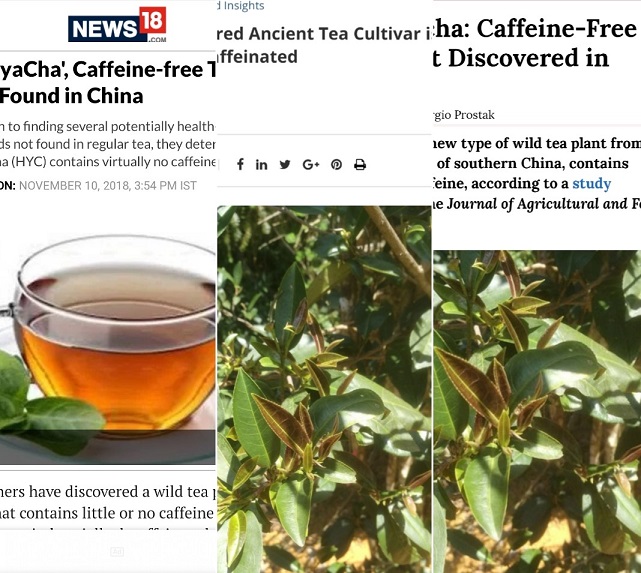
An as-of-yet uncategorized decaffeinated tea plant in Fujian province, China. Some of the articles exaggerated the claim; others got some of the science wrong completely. Put succinctly: a long-forgotten cultivar had mutated. How does that happen?
Well, as most tea botany nerds know, cultivars are only classified as such if the genetic info is uniform. Meaning: cultivated varieties of certain tea plants could only be called as such if they’re grown from clones or grafts from other members of that cultivar. If grown from seed, the genetic profile of that tea tree changes.
Well, the decaf tree—dubbed Hong Ya Cha—was one such genetic variant. And I couldn’t stop talking about it. Why? Well, my relationship with caffeine was in flux, and I looked for any tea-adjacent alternatives I could find.
In a real-life conversation with other tea blog friends, I brought the subject up. (Mainly curious if anyone sold any teas made from Hong Ya Cha.) One of them mentioned Verdant Tea as a possible source. I went to digging.
Turns out what they had was a completely different thing, entirely. Oh, they possessed “teas” that were made from a supposedly decaffeinated plant. But it wasn’t from a mutated Camellia sinensis tree. No, theirs was from a cousinly species from Yunnan province, China. Camellia crassicolumna.
The species is native to (and dispersed throughout) Guizhou and Yunnan province, China, including one small area in Yunnan province’s Ailao Shan region, dubbed Qianjiazhai. What little botanical data I perused listed it as a close cousin to Camellia sinensis var. assamica. Much like taliensis. Because of habitat loss, however, the species is considered endangered. Only one group has authorization to pick and cultivate from these trees in Qianjiazhai—the Zhenyuan Dongsa Cooperative.
As the name implies, it is a collective of farmers and tea processors that work closely in tandem. They observe the national forestry laws regarding the bushes, and care for the crassicolumna forests in the area that still exist. The group also cultivates from young gardens as well as pre-selected old growth, semi-feral trees. All the while, observing that they don’t over-harvest from them.
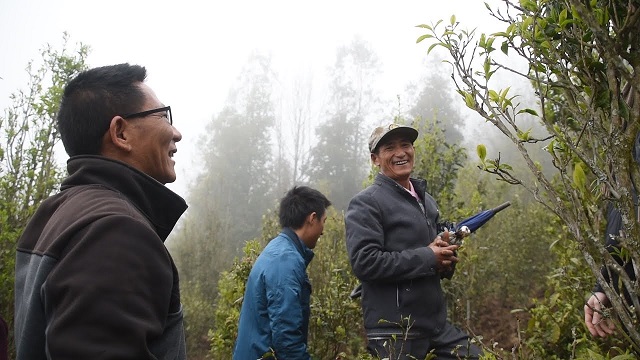
Well, I was sold. New tea cousin species whose leaves were processed as tea? Sign me up.
Verdant claimed the “tea” leaves were decaf, though. Some dodgy Chinese scientific papers I ran across claimed otherwise. Many said they were low-caf, but not completely free of the chemical. I guess I was going to have to use myself as a guinea pig. (Again.)
I purchased two crassicolumna teas from Verdant – a batch of loose sheng puerh from 2018, and a black tea from the same year. When I received them both, I immediately brewed them up that night. Two gong fu sessions—back-to-back—at 10PM.

Here’s how that went.
Black Tea
As black tea leaves go, these were definitely black, and . . . definitely leafy. Nothing in the processing would’ve given away their other-ness. Everything about this screamed “whole leaf Dian hong”. Or more cheekily put, “See? Look! This is totally a normal tea made from assamica. Hooooonest!”
I think the only thing that was somewhat different about it “may” have been the dry leaf aroma(?). I say that with a hypothetical question mark because I was figuratively digging for something to differentiate it from sinensis tea. The aroma was Dan Cong sharp, Keemun wood-sweet, Korean tart, and Yunnanese earthy. So, I guess that qualifies as weird.

The liquor brewed surprisingly pale, even for the minute I subjected it to. The steam aroma was sweet, slightly nutty, and with a shade of stone fruit fallen from its parent tree. As for taste, this first infusion reminded me quite a bit of a wild-picked, sun-dried Dian Hong, but with a sharpness I usually associate with teas made from Dan Cong cultivars. Something in the flavor reminded me of either a Georgian or Korean black tea, due to the sharpness found in the introduction. However, the smooth transition into something fruitier, which lined up more evenly with—say—a taliensis hong cha.
Fitting.
Sheng Puerh
Just like with its more oxidized cousin, the sheng puerh leaves looked like . . . sheng puerh leaves. By shape and coloring, they could’ve been mistaken for the hong cha version, but enough paleness and green-ness came through. Plus, it wasn’t nearly as stemmy as the black tea version. The smell was all sortsa sheng-y, down to the mossy earth, hippie perfume fragrance. One thing it had in common with the black tea version, though? That wood-sweet-fruit lean . . . thing. No idea what to call it other than “weird”.
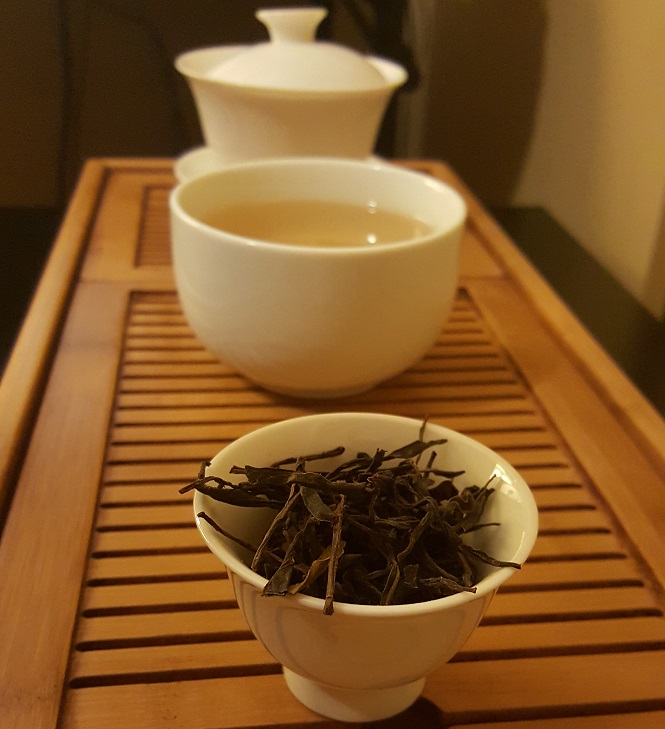
This brewed up every way a sheng cha would-‘n-should. The liquor colored to a pale amber with an aerial aroma of salted vegan friendly chips. (No, I will not say “kale”. Crap . . . I typed it.) Earth and something more herbaceous also came through. I was reminded of the aroma for raspberry leaf, for some reason—oxidized raspberry leaf. On the flavor front, this was every bit a young sheng, minus one key attribute. Literally no bitterness, whatsoever. A mild astringency appeared in the middle, but only for a second. Yet none of the usual young sheng cha tongue-punch reared its angry grit.
I brewed both up a second time . . . and a third. By the end of the second infusion, I didn’t even care how I staged the photos.
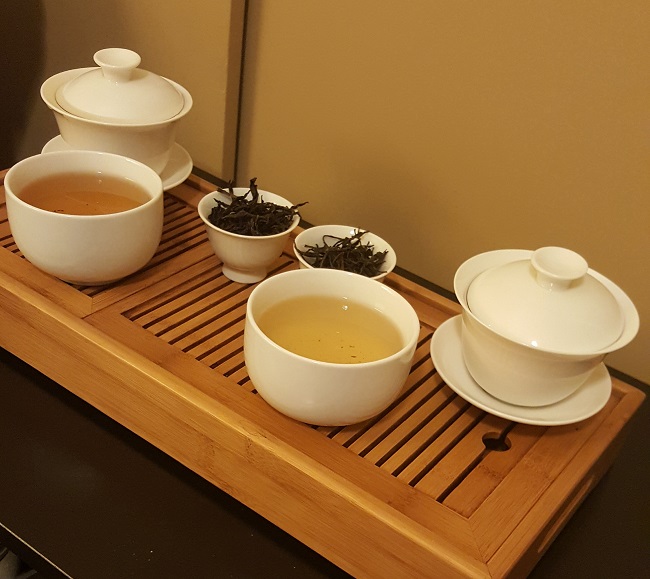
Aside from deepening in flavor a little bit more, their palatial characteristics didn’t change all that much. The black tea was still black tea-ish; the sheng puerh was still full-on sheng-y. Just by the aloofness of my narrative prowess here, I could tell no hint of caffeine had reached my brain. Even if there’d been a smidge, I would’ve sat upright in my chair, and concocted something more—I dunno—prosaic? These were delicious and relaxing. And the best part? No tannic, late-night caffeine heartburn, which is what usually happens if I drink tea at night.
How caffeinated were these?
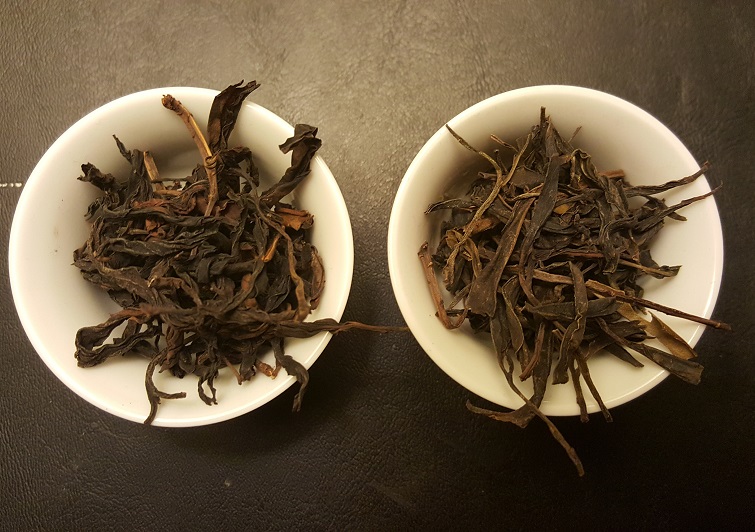
Well, I managed only about four hours of fitful sleep that night. So, that should tell ya something. Were these completely non-caf? Oooooh no. However, benefit of the doubt. I did do several infusions of each “tea” over a period of two hours. The fact that I managed to sleep at all after the dual sessions was a miracle.
Just based on my body’s reaction, I’d say that the amount of caffeine present in each “tea”—following six-plus infusions—equaled to two steeps of a lightly brewed var. sinensis Bai Mu Dan white tea. In other words, extremely low; the lack of presence of any tannins (especially in the sheng) supported this theory. For those really sensitive to caffeine, these would not be a good alternative. For those just looking to lessen their intake, or looking for something to take the edge off at night . . . yeah . . . these were quite nice.
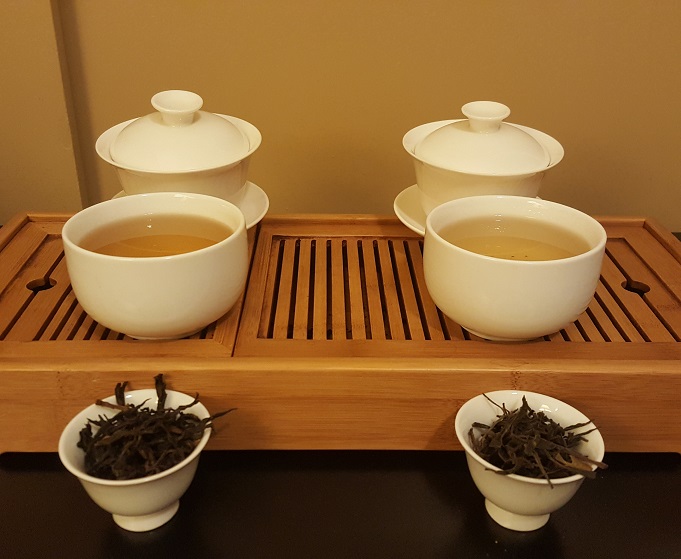
As for truly caffeine free tea alternatives, the quest continues ever onward.
To buy any of Verdant Tea’s crassicolumna teas, go HERE.
Leave a Reply to Xavier Cancel reply